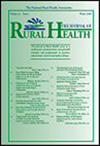Unveiling rural and Appalachian disparities in cigarette smoking through the social vulnerability index and other county-level characteristics
Abstract
Purpose
Mitigating tobacco-related disparities in the Appalachian region and rural areas is crucial. This study seeks to gauge cigarette smoking prevalence in Virginia counties, uncover rurality and Appalachian-linked disparities, and explore local drivers of these gaps.
Method
A 2011-2019 Virginia BRFSS data were used to estimate county-level cigarette smoking rates in adults aged 18 or older. Counties were categorized as urban/rural and Appalachian/non-Appalachian, with a focus on rural-Appalachian. Disparities in cigarette smoking rates and associated factors were analyzed via the Blinder-Oaxaca decomposition method. The study assessed 4 dimensions of the Centers for Disease Control and Prevention's social vulnerability index (SVI): socioeconomic, minority status, household composition, and housing. Additionally, county-specific factors such as tobacco agriculture, physician availability, coal mining, and tobacco retailer density were examined.
Findings
Rural areas exhibited a 6.18% higher cigarette smoking prevalence compared to urban areas (P<.001). SVI dimensions accounted for 53.2% of the disparity, county features explained 16.4%, and 30.4% remained unexplained. Appalachian areas had a 6.79% higher cigarette smoking prevalence than non-Appalachian areas (P<.001). SVI dimensions explained 51.4% of the disparity, county features accounted for 21.8%, leaving 26.8% unexplained. Rural-Appalachian areas showed a 7.8% higher cigarette smoking prevalence (P<.001). SVI dimensions contributed to 51.7% of the disparity, county features explained 9.6%, and 38.7% remained unexplained.
Conclusions
Substantial disparities in cigarette smoking prevalence exist in underserved areas of Virginia, including rural, Appalachian, and rural-Appalachian regions. While SVI dimensions, physician availability, tobacco agriculture, and coal mining contribute, yet notable gaps remain unexplained. Targeted interventions must tackle unique challenges in disadvantaged areas to reduce smoking and promote health equity.

 求助内容:
求助内容: 应助结果提醒方式:
应助结果提醒方式:


